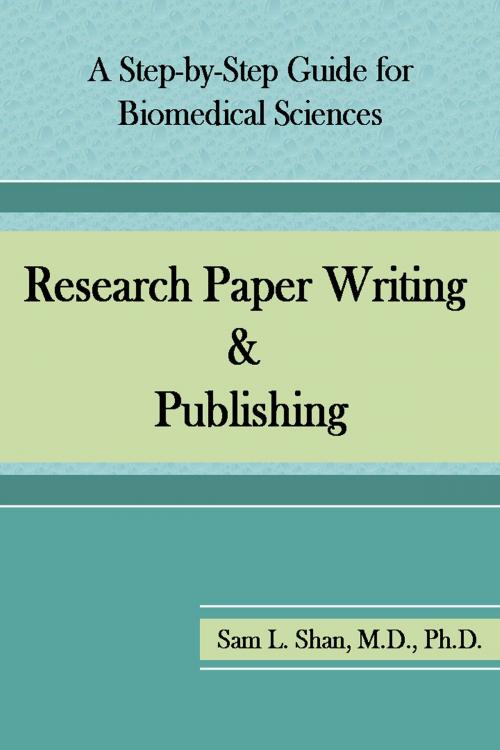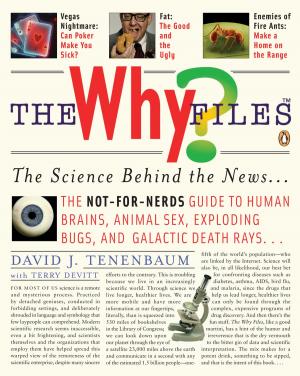Research Paper Writing & Publishing: A Step-by-Step Guide for Biomedical Sciences
Nonfiction, Health & Well Being, Medical, Reference| Author: | Sam L. Shan, MD, PhD | ISBN: | 9781311650924 |
| Publisher: | Sam L. Shan, MD, PhD | Publication: | May 4, 2015 |
| Imprint: | Smashwords Edition | Language: | English |
| Author: | Sam L. Shan, MD, PhD |
| ISBN: | 9781311650924 |
| Publisher: | Sam L. Shan, MD, PhD |
| Publication: | May 4, 2015 |
| Imprint: | Smashwords Edition |
| Language: | English |
There is no doubt that the most fundamental ingredient of a scientific paper is good science and that successful papers are those that present innovative research. However, the best papers are the ones that present the research work in a clear and logical way. In other words, a scientist should not only be a distinguished investigator, but also a professional scientific writer.
Poor writing may result in a significant delay of publication for even innovative findings. Unfortunately, instead of learning the art of scientific writing, many young scientists, especially those whose native langue is not English, simply blame their English proficiency for poor writing. It is true that English proficiency is essential for writing a good scientific paper, but unlike literary English, scientific English needs little ornamentation and does not have to be complex. The best scientific English is one that clearly expresses your idea in the fewest number of words. Journal editors always request authors to be as clear and concise as possible, since journal space is too precious to be wasted on verbosity. Therefore, I dedicate this book to helping young scientists understand and master the arts of scientific writing and publishing, thus facilitating the publication of their research work in peer-reviewed journals.
For that purpose, in this book I focused on the issues that young scientists often encounter. The book also has many unique features. First, a list is provided for quick references and easy memorization on “What to write” and “What to avoid” in writing a paper. Second, a series of examples with corresponding comments are presented to help reiterate the key points. Third, because the book describes the framework of a general research paper, mastery of its format will allow for easy adaptation to most journal specifications. And lastly, this book is written using “easy-to-read” English—simple words, simple sentences, and short paragraphs—so that non-native English-speaking scientists can enjoy the text.
I sincerely hope that this book will help you write and publish a scientific paper more effectively, efficiently, and enjoyably. I would also like to emphasize that this book is a guide to scientific paper writing and publishing, not a reference to English grammar. To improve your overall writing skills, you must practice, practice, and practice. In addition, I strongly recommend that you to pay meticulous attention to how native-English-speaking professional scientists express their research work and learn their writing styles and language use. I believe you will then see great improvements in your own scientific writing.
There is no doubt that the most fundamental ingredient of a scientific paper is good science and that successful papers are those that present innovative research. However, the best papers are the ones that present the research work in a clear and logical way. In other words, a scientist should not only be a distinguished investigator, but also a professional scientific writer.
Poor writing may result in a significant delay of publication for even innovative findings. Unfortunately, instead of learning the art of scientific writing, many young scientists, especially those whose native langue is not English, simply blame their English proficiency for poor writing. It is true that English proficiency is essential for writing a good scientific paper, but unlike literary English, scientific English needs little ornamentation and does not have to be complex. The best scientific English is one that clearly expresses your idea in the fewest number of words. Journal editors always request authors to be as clear and concise as possible, since journal space is too precious to be wasted on verbosity. Therefore, I dedicate this book to helping young scientists understand and master the arts of scientific writing and publishing, thus facilitating the publication of their research work in peer-reviewed journals.
For that purpose, in this book I focused on the issues that young scientists often encounter. The book also has many unique features. First, a list is provided for quick references and easy memorization on “What to write” and “What to avoid” in writing a paper. Second, a series of examples with corresponding comments are presented to help reiterate the key points. Third, because the book describes the framework of a general research paper, mastery of its format will allow for easy adaptation to most journal specifications. And lastly, this book is written using “easy-to-read” English—simple words, simple sentences, and short paragraphs—so that non-native English-speaking scientists can enjoy the text.
I sincerely hope that this book will help you write and publish a scientific paper more effectively, efficiently, and enjoyably. I would also like to emphasize that this book is a guide to scientific paper writing and publishing, not a reference to English grammar. To improve your overall writing skills, you must practice, practice, and practice. In addition, I strongly recommend that you to pay meticulous attention to how native-English-speaking professional scientists express their research work and learn their writing styles and language use. I believe you will then see great improvements in your own scientific writing.















